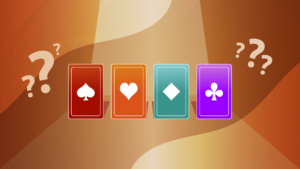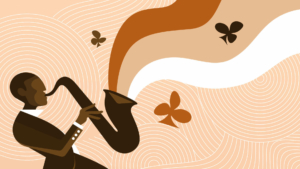
Major suit raises after a take-out double

In modern bridge, the simple raise of opener’s major after a takeout Double was cut in half: the upper range is now shown via a transfer bid, the lower zone with the good old natural simple raise. With the Mixed raise, 2NT and fit-showing jump shifts, a pair now has a colorful range of bids to paint the best contracts!
1. Preambule
The purpose of a take-out Double is to find a fit and start a competitive situation. After an opening of 1♥ or 1♠, opener’s side has a head start if responder has support for opener’s major. Showing the kind of support with a high degree of precision thanks to various support showing bids will confirm this advantage. In point ranges where the points are a priori balanced between the two sides, around the famous 17-23HCP range, responder’s calls will in priority show the number of trumps in accordance with the law of total tricks. At the same time, an important place is reserved for hands that are invitational or strong enough for game. All that with a first consequence that will upset the landscape of bidding after a take-out Double: the Redouble denies a fit.
2. The system table














Two bids for one support
After 1M-Double, the raise to 2M shows a weak raise, 5-7DH, but not very weak (you are allowed to pass, it’s not a crime!). To show the maximum of the range for a simple raise, make a transfer (2♦ to show a raise of 1♥, 2♥ for a raise of 1♠).
3. Details of each sequence
1/1♥-Dble-2♦ and 1♠-Dble-2♥
Note that in these sequences, support is shown by means of a transfer: 2♦ for Hearts and 2♥ for Spades. This is the new strong point of the system. It shows a positive hand that is situated in one of two different point ranges:
- A frequent range, 8-10 points (DH)(*) , therefore stronger than a limit raise (11-14DH), which is shown with 2NT. Examples:
♠ K 10 5
♥ A 7 5
♦ Q 9 6 5 3
♣ 7 4
The same type of hand after 1♥-Dble-2♦ or 1♠-Dble-2♥.
(*) Points DH (or just DH) = high card points + distributional points (D): void = 3, singleton = 2, doubleton = 1.
- An unusual range, 15+ points (DH), therefore stronger than a limit raise (11-14DH), which is shown with 2NT. Examples:


Opener’s rebids. He reacts to a raise showing 8-10 DH.

Standard opening, nothing more to say.

Pre-empt.

Trial bid (trial bids are 2♠, 2NT, 3♣ or 3♦).

Sign-off.
Second bid by responder if he has 15+DH.
There’s one simple rule to remember. Any new bid after opener’s execution of the transfer at the two-level is game forcing.
Responder bids:
- 2NT with 3-card support, more or less balanced.
- 3♥ or 3♠ with 4-card support, more or less balanced.
- A new suit with a good five-card suit.
- 4♥ or 4♠ when there is no more hope of slam after partner’s 2♥ or 2♠
Crescendo
With a weak hand and four trumps, pre-empt with a jump raise to the three-level. With 8-10DH and four trumps, use the Mixed raise (1♥-Dble-2♠ and 1♠-Dble-3♥). In the range of 11-14DH, reply 2NT (with three or four trumps). With even more points (15+DH), raise with a transfer (as if you had a maximum simple raise) and then, over opener’s execution at the two-level, speak again, thus revealing your powerful support in two rounds.
2/ 1♥-Dble-2♥ and 1♠-Dble-2♠
You need a Funbridge Premium or Premium+ subscription to keep reading.
To read the rest of Alain Lévy’s article, please log in with a valid Premium or Premium+ account.



